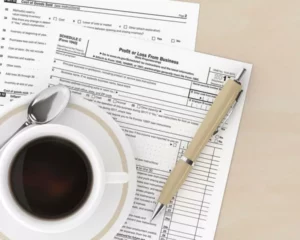Content

A period is one operating cycle of a business, which could be a month, quarter, or year. If you use a single-entry accounting system (i.e., cash-basis accounting), you can still use the accounting cycle to record entries, close your books, etc. But, you don’t need to follow the steps that require you to check entries for debits and credits. The balance sheet and income statement depict business events over the last accounting cycle. Most businesses produce a cash flow statement; while it’s not mandatory, it helps project and track your business’s cash flow. Once the company has made all the adjusting entries, it creates financial statements.
- If you use accounting software, this usually means you’ve made a mistake inputting information into the system.
- Once you check off all the steps, you can move to the next accounting period.
- In this step, every transaction will be looked at and analyzed to determine how it affects the financial position or the accounting equation.
- Journal entries are entered in chronological order, and debits are entered before credits.
- Usually, this listing is prepared at the end of a financial period.
- Automating the process increases efficiency and reduces potential risks of misstatement.
- Posting closing entries is an optional step of the accounting cycle.
- Consider using receipt-tracking software to organize transactions and expenses correctly.
Many business owners focus on the balance sheet and income statements. But the cash flow statement is equally important to help you understand how your net income and the activity in the cash account compare. Companies also modify the accounting cycle’s steps to fit their business models and accounting procedures. One of the major modifications is made according to the type of accounting method a business uses.
Step 6: Closing the Books
Steps one and two occur as often as needed during an accounting period. Steps three, four, five, and six occur at the end of each accounting period. Steps seven and eight usually occur only at the end of each fiscal year, but these steps may be completed at the end of each accounting period if the company chooses to do so. You have not recorded the interest in your books, but it appears on your bank statement. If you use cash-basis accounting, record transactions when cash physically exchanges hands (i.e., when you receive money or pay). Track transactions in your journal chronologically as they happen.
- An unadjusted trial balance is a trial balance that is prepared before adjusting entries are made into accounts.
- With double-entry accounting, each transaction is recorded as a debit and corresponding credit in two or more subledger accounts.
- It’s worth noting that some businesses also have internal accounting cycles that have a shorter accounting period.
- The accounting cycle is a comprehensive process designed to make a company’s financial responsibilities easier for its owner, accountant or bookkeeper.
- Picture Perfect’s bookkeeper clears off his desk and gets ready for the next day, when he starts working on the new accounting period.
- This process is repeated for all revenue and expense ledger accounts.
When you have credits and debits from your transactions that don’t balance, you have to review the entries and adjust accordingly. Adjusting entries ensure that the revenue recognition and matching principles are followed. To find the revenues and expenses of an accounting period adjustments are required. The general ledger is a central database that stores the complete record of your accounts and all transactions recorded in those accounts. A business’s accounting period depends on several factors, including its specific reporting requirements and deadlines.
Post transactions to general ledger.
Once you record everything and approve it, the next step is to post the transactions to the general ledger. Think of the general ledger as a summary sheet where all transactions live within categories. An accounting cycle is a continuous and fixed process that needs to be followed accordingly.

The general ledger breaks down the financial activities of different accounts so you can keep track of various company account finances. A cash account is by far the most crucial account in a general ledger, as it gives an idea of the cash available at any time. Here’s an in-depth look at the eight steps in the accounting cycle. Once you check off all the steps, you can move to the next accounting period. In case you’re wondering whether to use cash or accrual accounting, cash accounting is suitable for freelancers, small businesses and sole proprietorships.
How the Accounting Cycle Works
This step is important, as after all entries are shown, the bookkeeper will check and make sure that the total debit and credit balances are equal. Performing this step will ensure the record is accurate before moving on to the following steps. The accounting cycle is a holistic process that records a business’s transactions from start to finish, helping businesses stay organized and efficient.

Sign up for Shopify’s free trial to access all of the tools and services you need to start, run, and grow your business. In the meantime, start building your store with a free 3-day trial of Shopify. Try Shopify for free, and explore all the tools and services you need to start, run, and grow your business. Moreover, if https://www.bookstime.com/ you have inaccurate information, you might inadvertently mislead your lenders, creditors and investors, which can have serious legal consequences. Finally, if your books are disorganized, you might provide inaccurate information when filing taxes. Learn more about how Pressbooks supports open publishing practices.
Closing the Accounting Cycle
While the income statement shows revenue and expenses that don’t cost literal money (like depreciation), the cash flow statement covers all transactions where funds enter or leave your accounts. The first step to preparing an unadjusted trial balance is to sum up the total credits and debits in each of your company’s accounts. Debits and credits for only the balance sheet accounts are tested to ensure they equal out. This trial accoutning cycle balance consists only of balance sheet accounts, as all temporary accounts have been closed. The accounting cycle is an eight-step process that accountants and business owners use to manage a company’s books throughout a particular accounting period—typically throughout the fiscal year (FY). The federal government’s fiscal year spans 12 months, beginning on October 1 of one calendar year and ending on September 30 of the next.
What is the 9 accounting process?
The steps are as follows: collection and analysis, journalizing the transactions, posting to the general ledger, unadjusted trial balance, adjustments, adjusted trial balance, financial statements, close accounts, post-closing trial balance.
After the company makes all adjusting entries, it then generates its financial statements in the seventh step. For most companies, these statements will include an income statement, balance sheet, and cash flow statement. The accounting cycle is a step-by-step process to record business activities and events to keep financial records up to date. The process occurs over one accounting period and will begin the cycle again in the following period. A period is one operating cycle of a business, which could be a month, quarter, or year. Ever dream about working for the Federal Bureau of Investigation (FBI)?
Accounting cycle vs. the budget cycle
With double-entry accounting, each transaction has a debit and a credit equal to each other, common in business-to-business transactions. It gives a report of balances but does not require multiple entries. Every individual company will usually need to modify the eight-step accounting cycle in certain ways in order to fit with their company’s business model and accounting procedures. Modifications for accrual accounting versus cash accounting are usually one major concern.
Transactions include expenses, asset acquisition, borrowing, debt payments, debts acquired and sales revenues. Double-entry accounting is ideal for companies that create all the major accounting reports, including the balance sheet, cash flow statement and income statement. The accounting cycle is an effective way for companies to systematically record all financial transactions during an accounting period. The eight-step cycle helps companies make sure their financial information is correct before they close their books and then reset them for the next accounting period.